Acute pyelonephritis urinalysis. Pyelonephritis and urinalysis
Diseases urinary system, including pyelonephritis, are easily diagnosed today. The main study is (including general) urinalysis for pyelonephritis. It refers to laboratory research and allows you to find the disease at an early stage. By determining and comparing urine parameters, it is possible to identify the disease in children and adults with the same accuracy.
general information
Pyelonephritis is inflammation in the kidneys. The disease affects the intermediate tissue of the organ and the renal pelvis. Urologists share three stages - acute pyelonephritis, chronic and chronic form with periodic attacks. The danger of the disease lies in the fact that it develops without specific symptoms and manifest itself after reaching the acute stage.
The disease has several features. First of all, pyelonephritis appears in both adults and children. main reason diseases - a pathogenic microorganism, which is determined in the urine with pyelonephritis. Therefore, urine in pyelonephritis is considered the main object of study, and tests for pyelonephritis help to identify the microorganism. Signs of kidney disease in children and adults are back pain in the lumbar region, body temperature, difficulty and pain when urinating. For correct and rapid diagnosis you need to take samples and undergo medical examinations.
What tests are needed for diagnosis and their combination?
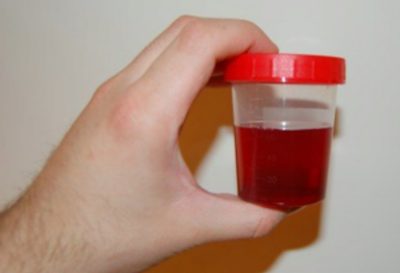 Bacteriological culture is one of the most effective methods to diagnose infections.
Bacteriological culture is one of the most effective methods to diagnose infections. To date, kidney disease can be found after laboratory examinations. Doctors identify a number of the most important studies. They prescribe them to confirm or refute the disease in the urinary organs:
- urine sample according to Nechiporenko and Zimnitsky;
- bacteriological culture;
- general analysis urine and blood.
Changes in these studies can tell the urologist about the extent of the spread of the disease and about which pathogen caused it. All types of laboratory samples are valuable for making a primary diagnosis. To confirm the assumptions, the doctor will refer the patient to other more serious examinations.
Urinalysis and culture for sterility
OAM with pyelonephritis shows the doctor how much the disease affected the kidneys and the whole body. Therefore, in the study, an important detail is the leukocyte formula. This method recognized as the most informative and used by all doctors. In the general analysis of urine, the number of leukocytes and bacteria, tissue particles, erythrocytes and mineral sediment is determined. Acidity is taken into account.
Seeding for sterility makes it possible to identify changes in the microflora of the fluid secreted by the body. The result of such a study gives an idea of the type of pathogen and determines the sensitivity of bacteria to medicines. When sowing urine get the maximum accurate results than with a general analysis or examination under a microscope.
Urinalysis according to Nechiporenko and Zimnitsky with pyelonephritis
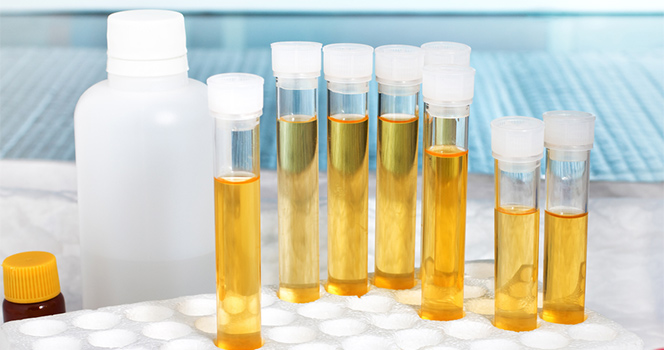 Urine analysis according to Nechiporenko is one of the methods for studying the composition of urine.
Urine analysis according to Nechiporenko is one of the methods for studying the composition of urine. Leukocytes in pyelonephritis - important indicator, which is in the sediment. Leukocyturia in pyelonephritis is a sign of pathology. The number of leukocytes can change, so several studies are being conducted to clarify. This test measures the number of red blood cells. Both of these indicators are calculated for a certain volume of urine. The technique allows to identify obvious and sluggish infections. A study according to the Nechiporenko method is carried out with acute pyelonephritis and with hidden or chronic form. A daily study using the Zimnitsky method allows you to make a diagnosis in children. This study detects changes in the specific gravity of urine, which manifests itself in inflammation.
Tests for urogenital infection
This type of examination of the discharge gives the doctor the opportunity to confirm suspicions. To identify urogenital infections, you need to pass bakposev and ELISA ( linked immunosorbent assay). Bakposev involves examining urine for the presence of bacteria in it. As a result, it is possible to determine the dominant pathogen and select a medicine. ELISA reveals harmful bacteria after obtaining information on antigens. ELISA gives more full information. Another important research considered PCR. It allows you to identify TORCH infections, chlamydia and other pathogens that provoke dangerous diseases.
General and biochemical blood test
 A general analysis can indicate the presence of various processes in the body.
A general analysis can indicate the presence of various processes in the body. A general blood test for pyelonephritis is prescribed in all cases. It shows a reduced level of hemoglobin and red blood cells, the presence of leukocytosis, in other words, changes in the leukocyte formula. Doctors take into account the rate of erythrocyte sedimentation - substances containing blood cells. Blood chemistry - informative method diagnostics to detect an increase in urea and creatinine in the blood. When conducting biochemical research blood detect antistreptolysin antibodies. This indicator indicates the presence of a streptococcal nature of the disease. This indicator is especially important for glomerulonephritis.
What analyzes are the most informative?
Urinary fluid tests can tell about the presence of kidney disease. OAM is considered the first step in the examination of the patient. He gives general information about indicators. Doctors speak positively about the samples according to Zimnitsky and Nechiporenko. The last test allows you to identify leukocytes, which indicate the presence of kidney and urinary tract disease. In acute pyelonephritis, leukocytes are determined in the urine test, so the test is especially important. To identify kidney disease in children, urine is examined according to the Zimnitsky technique. The results of urinalysis in pyelonephritis, studied by a set of methods, provide doctors with maximum information.
AT medical practice Urinalysis for pyelonephritis is done to determine the cause of the disease.
Pathology results from infection or hypothermia.
The study is performed to detect inflammation of the kidneys at an early stage of development. This fact is of particular relevance for children.
Pyelonephritis occurs as a result of inflammatory processes that occur in the kidneys. The disease at the first stage affects the renal pelvis and after a while spreads to the tissues.
The first sign of the disease may be sharp pains in lumbar region. Often they are accompanied by fever, general weakness and nausea.
Children have abdominal pain.
The disease proceeds in the following forms:
- acute;
- chronic;
- chronic with exacerbations.
To put accurate diagnosis and prescribe appropriate treatment, a urinalysis should be done.
To obtain more accurate data on the course of the disease, a blood test is performed simultaneously with the study of urine.
With pyelonephritis, it is necessary to monitor the condition of all organs, especially of cardio-vascular system. Special meaning it has during periods of exacerbation.
The following blood tests help in the diagnosis of the disease:
- biochemical;
- clinical;
- blood culture for sterility.
When research results show high content leukocytes, the first thing that makes experienced doctor, appoints a general analysis of urine.
The data obtained is sufficient for the diagnosis of pyelonephritis.
Medical practice shows that urinalysis for pyelonephritis should be carried out regularly.
The most representative for timely diagnosis and effective treatment studies are considered according to the following methods:
- general analysis;
- research on Nechiporenko;
- study according to Zimnitsky.
All indicators are summarized in a special table, where there are values that correspond to the norm. When deciphering the results, deviations from the specified norm are recorded.
By the nature and magnitude of these deviations, one can judge the presence of a particular pathology. The attending physician prescribes the treatment and monitors its effectiveness.
Types of analyzes
According to the results of a general urine test for pyelonephritis, the cause of the disease is determined, and after that, drugs and procedures are determined.
It should be noted that during the first study, some indicators may be hidden. An elevated level of leukocytes and proteins indicates the presence of the disease.
To find out the cause of the occurrence, perform additional research, including biochemical analysis urine. It is taken from children and adults.
At this stage, it is important to determine the nature of the viruses, their resistance to antibiotics. This approach makes it possible to make an accurate diagnosis in a short time.
When pyelonephritis is done on initial stage illness. At the same time, a biochemical blood test is performed.
With this approach, the inflammation that develops in renal tissue.
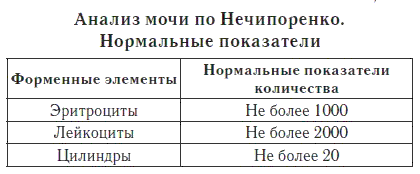
The main indicators that are determined by the results of a urine test are leukocytes, protein cylinders and erythrocytes.
The concentration of these cells in the sediment provides subject information for the attending physician. When deciphering the results obtained, it must be borne in mind that the norm for the content of leukocytes in the urine in women is twice as high as in men or children.
With pyelonephritis, it is more often used for children. The aim of the study is to determine functionality kidneys.
In chronic pyelonephritis, information of this kind has importance. Samples for analysis are taken during the day after a certain period of time.
It can be 3 or 4 hours. The selected mode makes it possible to assess the density of urine and the dynamics of its change.
When passing tests, the patient must adhere to the usual daily routine, do not limit himself to drinking, but do not abuse it either. As a rule, the study is carried out for patients who are treated in a hospital.
Analysis indicators
When pyelonephritis is already diagnosed, urine tests are performed to monitor the progress of treatment.
To determine the correctness of the prescribed drugs and procedures, periodically conduct a blood test and look at the indicators.
The first sign of the disease is considered to be an excess of the level of leukocytes in the urine. This indicator in women can range from 0 to 6, in men - from 0 to 3.
Such differences are explained physiological features female and male body.
The presence of white blood cells in the urine clearly indicates kidney disease. The doctor is faced with the task of timely and correctly identifying the disease.
A general urine test, which is done if pyelonephritis is suspected, makes it possible to assess the state of the body as a whole.
People in healthy condition, both in adults and children, the results of the analysis do not contain protein and glucose.
As soon as these substances appear in the urine, an experienced doctor understands that the normal functioning of the kidneys is impaired. The appearance of sugar in the urine follows after it has appeared in the blood.
In fact, this is a direct confirmation of diabetes. Protein enters the urine different reasons, including in inflammatory processes that occur in the kidneys. Doctors take these indicators very seriously.
When analyzing urine for pyelonephritis, the density and acidity may remain within the normal range.
When the result shows an increase in the level of acidity, this indicates the development of pathology, including an exacerbation of pyelonephritis.
In such a situation, it is necessary to carefully monitor the dynamics of changes in density. Morning urine, as a rule, has a density within the normal range.
When this figure increases during the day, this indicates the development of pyelonephritis. If the density decreases, then there is reason to assume renal failure. A similar effect is caused by taking diuretic drugs.
Bilirubin is formed when hemoglobin is destroyed, which occurs as a result of inflammatory processes.
Urea is present in urine healthy person. The norm of content in children is the lowest and increases with age.
In kidney diseases, the content of this substance increases and exceeds the existing norms.
The attending physician compares the result of the analysis and the data from the table. By the magnitude of the discrepancy between the indicators, it is possible to assess the severity of the disease that has arisen.
The diagnosis and the appointment of therapy depend on what indicators will be obtained as a result of the analysis. Given these circumstances, it is necessary to properly prepare for the analysis of urine.
The day before the procedure, it is advisable to exclude from the diet vegetables and fruits that can change the color of urine. When diagnosing pyelonephritis, this can serve as a distraction.
Do not take diuretics and herbal decoctions. Before urination, it is necessary to thoroughly wash the genitals and prepare sterile dishes.
Pyelonephritis is an infectious disease bacterial nature characterized by inflammation of the renal pelvis. The symptomatology is similar to the manifestations of other diseases of the urinary system, therefore, to make an accurate diagnosis, it is carried out complex diagnostics which includes laboratory research. Urinalysis for pyelonephritis is one of the mandatory.
Why is it necessary to take tests for pyelonephritis? The reason is simple: because main function kidneys - excretion from the body excess fluid and decay products, naturally, inflammatory processes also affect the characteristics of urine. This applies to its density, color, transparency, smell, and, of course, microbiological properties. In addition, the amount of fluid secreted is also taken into account, because this is an important indicator of kidney function.
What tests are prescribed for pyelonephritis:
- OAM (general urinalysis);
- according to Nechiporenko;
- according to Zimnitsky;
- by Gram.
The advantage of these studies is their high informativeness even on early stages pyelonephritis, short terms for obtaining results (usually the next day), the possibility of indirect diagnosis of the work of some other organs. In addition, these studies are not expensive, which is also important.
General urine analysis
It is carried out not only with inflammation of the kidneys, but also as part of the examination for any diseases, as well as preventive examination adults and children.
Urine analysis indicators for pyelonephritis are also physical parameters: density, color, transparency, smell.
Normally, the density of urine in women and men is 1.012-1.22 g / l. If the indicators are elevated, this is a sign of pyelonephritis. A decrease in density indicates kidney failure.
More than a change in color, the smell speaks about pyelonephritis - it becomes unpleasant, and appears even before the onset of other symptoms. This is due to reproduction pathogenic bacteria and their vital activity - putrefactive processes are always accompanied by an unpleasant odor.
Analysis according to Nechiporenko
This analysis shows the number of leukocytes, erythrocytes, protein, cylinders, bacteria and other inclusions.
Normal urine values in adults should be as follows:
- leukocytes up to 2000/ml;
- erythrocytes - up to 1000 / ml (higher - hematuria or blood in the urine);
- cylinders - up to 20 / ml.
In addition to these inclusions, acute pyelonephritis may reveal pus (pyuria), protein, bacteria, casts.
Cylinders are the same proteins, but compressed when passing through the tubules of the kidneys. If the analysis shows their high content, this indicates proteinuria, which develops with glomerulonephritis or nephrotic syndrome.
The presence of protein indicates damage, expansion of the tubules and glomeruli of the kidneys, since normally large protein molecules do not pass through them. But the protein in the urine does not always indicate pathology - a small amount, up to 0.033 g / l, is detected in healthy people, as well as after infectious disease, intensive physical activity and consumption of protein foods.
Bacteria are detected at any infectious pathologies organs of the urinary system. Pus in the urine occurs with a developed inflammatory process.
Analysis according to Zimnitsky
With pyelonephritis, tests are also prescribed to determine the degree of impaired renal function. For this, a Zimnitsky test is carried out - it shows how the organs cope with the concentration of urine. The same analysis allows you to determine the density of urine and daily diuresis.
Normally, both men and women should have the following indicators:
- daily diuresis - from 1.5 to 2 thousand ml;
- the ratio of drunk and excreted fluid - from 65 to 80%;
- daily diuresis - 2/3 of the total;
- night - 1/3 of the total;
- the density of the liquid is not less than 1.020 (it decreases with inflammation of the renal pelvis).
Other indicators in the analysis of urine, if they deviate from the norm, then not much.
Gram study
It is carried out to determine the type of pathogen. Everything in medicine pathogenic microorganisms divided into two large groups: gram-positive and gram-negative. The type of bacteria is determined by staining with aniline dyes. Gram-positive bacteria stain for Blue colour, gram-negative do not stain.
This division is justified by different properties their cell walls, which affect drug sensitivity. Depending on the results of staining, antibiotics are selected. Gram-negative bacteria are sensitive to some groups of drugs, and gram-positive to others.
As a rule, a part of urine collected for Nechiporenko analysis is used for Gram staining.
Blood analysis
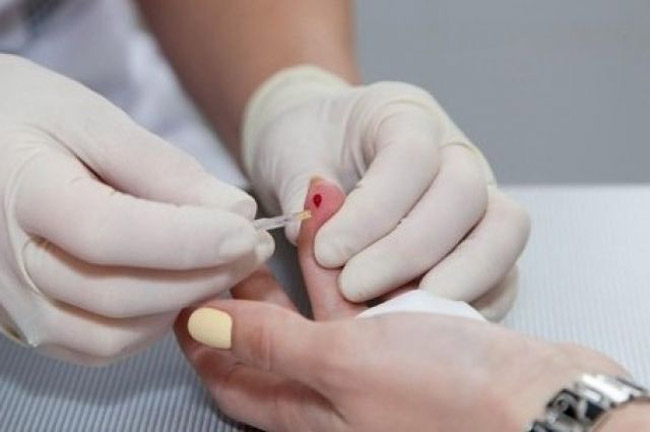 In fact, a blood test for pyelonephritis is also necessary - in order to determine the presence and level of the inflammatory process in the body. For this, a general analysis (KLA) is carried out, that is, “blood from a finger”. Two indicators of blood speak about inflammation in the kidneys: the number of leukocytes and the erythrocyte sedimentation rate (ESR). The higher these parameters, the more serious inflammatory process. Indirectly, a decrease in the number of red blood cells and hemoglobin also speaks of pyelonephritis.
In fact, a blood test for pyelonephritis is also necessary - in order to determine the presence and level of the inflammatory process in the body. For this, a general analysis (KLA) is carried out, that is, “blood from a finger”. Two indicators of blood speak about inflammation in the kidneys: the number of leukocytes and the erythrocyte sedimentation rate (ESR). The higher these parameters, the more serious inflammatory process. Indirectly, a decrease in the number of red blood cells and hemoglobin also speaks of pyelonephritis.
To assess the work of the kidneys, a biochemical blood test is also prescribed, the main parameters of which will be the content of creatinine, urea, uric acid and residual nitrogen, elevated level which indicates a deterioration in kidney function.
How to take tests correctly
First of all, passing any tests, you need to remember about intimate hygiene, which is performed before each collection of urine, about the ban on products that change its color or smell. The same applies to antiviral or antifungal, antibacterial substances. Women are not recommended to give urine during menstruation - blood particles can get into the container and distort the results of the study. However, it happens that the tests need to be carried out urgently, in this case, more thorough hygiene of the external genital organs is needed, a woman is recommended to use a tampon.
Analyzes are given according to certain rules. Urine for general analysis is collected in the morning, on an empty stomach, at the first urination, in a sterile container. After collection, it is immediately sent to the laboratory so that bacteria do not develop in the liquid, which, of course, are present in it - this can distort the results.
For research according to Nechiporenko, an average portion of the first morning urine is collected, according to the same rules.
Analysis according to Zimnitsky involves the collection of 8 portions of urine, with an interval of 3 hours between urination. The first urination is performed at 6 am, this urine is not collected. The following portions are collected in separate sterile containers, which are stored until morning in the refrigerator, tightly closed.
As for the general blood test, it can be taken on any day, but always in the morning, on an empty stomach. No other preparation is required.
Based on the results of the described studies, an accurate diagnosis can be made. Of course, in our time, ultrasound is mandatory, other hardware and instrumental types of examinations may be shown, but they are necessary for exact definition kidney function, the state of their tissues. And for the diagnosis, the patient's history, examination and test results are quite enough.
Usually pyelonephritis occurs with pronounced symptoms, but it can also occur. undercurrent illness. In this case, it is possible to diagnose the disease only after urine tests. Also, when the first symptoms of inflammation of the kidneys appear, it is necessary to pass the complex additional tests to determine the severity of the disease, its pathogens and assess the state of the body.
Required Research
The main studies for pyelonephritis are blood and urine tests, they are carried out not only during diagnosis, but also during treatment, and always after recovery before discharge.
What examinations are needed:
These are the most important analyzes with pyelonephritis, but others may be needed to clarify: blood for biochemistry, C-reactive protein, urine according to Zimnitsky, bacteriological blood culture for sterility.
For a urinalysis for pyelonephritis to show reliable information, you need to properly prepare for it:

How to collect urine:
- A general analysis is given immediately after sleep, only the first morning urine is needed. The required volume is 50-100 ml.
- Nechiporenko method- the average portion of urine is collected during the first morning urination. The time of collection should be written on the container.
- For seeding for sterility you can take the test at any time of the day, provided that 2-3 hours have passed since the previous urination. You can only use the vessel that will be issued in the laboratory.
Blood is donated in the morning on an empty stomach, the day before you should refuse junk food and tell your doctor if you have taken any medications.
Urinalysis values
Urinalysis for pyelonephritis shows big picture inflammation. In a completely healthy person, the results will be without deviations, that is, the urine must be completely sterile. At normal operation kidneys excrete 1.5-2 liters of urine per day. In most cases, with pyelonephritis, the amount of fluid released decreases, but it can, conversely, increase.
The number of leukocytes is important, their level rises during inflammatory processes in the body. The normal number in women is 0-6, in men 0-3. It should be taken into account that slight deviation possible with malnutrition. In acute pyelonephritis, urinalysis will show an increase in leukocytes over 15; in chronic pyelonephritis, this figure rarely rises to a critical level.
The acidity of urine in pyelonephritis may fluctuate, it is possible to decrease the pH level, or increase it. An indicator of 5-7 is considered the norm, with errors in the diet, urine indicators can be in the range of 4.2-8. If the pH is less than 5, then the reaction of the urine is acidic, at a constant pH level greater than 6, we can talk about alkaline environment in the urinary system.
With pyelonephritis, high acidity says that the causative agent is coli or Mycobacterium tuberculosis.
For other media, it is determined low level acidity.
Other meanings of OAM and what they mean:
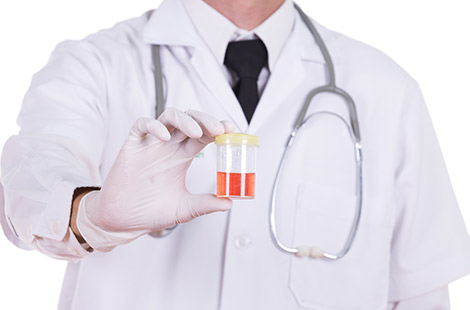
An important factor in the diagnosis is the color and concentration of the secreted fluid.
With pyelonephritis, the urine becomes cloudy and even with the naked eye you can see the sediment at the bottom of the container. At purulent formations urine becomes dark in color, and more bright color urine with pyelonephritis indicates an extensive inflammatory process or concomitant urolithiasis. Also, with kidney stones and severe pyelonephritis, blood in the urine can be detected.
Women during menstruation should use a tampon so that there are no atypical impurities in the analysis. In addition, you should warn the doctor about the possible ingress of blood into the container.
The density of urine in a healthy person is 1.010-1.22 g / l. If the allowed value is exceeded, then high probability diagnosed with inflammation of the kidneys, decreased normal level occurs with renal failure or as a consequence of taking diuretics.
Transcription of other studies
For more accurate diagnosis it is necessary to study urine by the Nechiporenko method. This method is aimed at quantifying the following indicators:
- Leukocytes - with pyelonephritis increase over 2000 per 1 ml. Also high level leukocytes can indicate the development of urolithiasis, kidney infarction, cystitis or prostatitis.
- Erythrocytes - normal amount less than 1000 per 1 ml. high value may indicate the presence of a purulent process in the kidneys, chronic renal failure, glomerulonephritis, nephrotic syndrome.
- Cylinders - exceeding the number above 20 occurs with glomerulonephritis, pyelonephritis, renal vein thrombosis, amyloidosis and other pathologies.
Urine sterility analysis is very important.
With its help, it is determined which bacteria became the source of infection, their number, and to which antibiotic they are most sensitive. How to decipher this analysis:
- With an amount of up to 103 per 1 ml, the flora is considered normal.
- Indicator 103-104 - there is a risk of developing inflammation.
- Over 105 per 1 ml - there is an infection in the urinary system.
A blood test for pyelonephritis can tell about the general condition of the body. But the main value in inflammation of the kidneys is the quantitative indicator of leukocytes. The results indicate all types of these cells and their percentage. The following indicators are considered normal:

With inflammation of the kidneys, the level of neutrophils is most often exceeded, it is this value that indicates the presence bacterial inflammation. During the recovery phase, there may be a slight increase in monocytes, but this is considered normal state if there are no comorbidities.
But still, urine tests are considered the most informative. It is by them that any diseases of the urinary system can be diagnosed with accuracy.
It is impossible to make a diagnosis on your own, even if there are results. Only doctors can evaluate all the values in the complex and understand what kind of disease is developing.
Feedback from our reader Olga Bogovarova
I recently read an article that talks about the "Monastic collection of Father George" for the treatment of pyelonephritis and other kidney diseases. With the help of this collection, you can FOREVER cure diseases of the kidneys and urinary system at home.
I was not used to trusting any information, but I decided to check and ordered a package. I noticed changes within a week: permanent aching pain in the lower back, pain during urination that tormented me before - receded, and after 2 weeks they disappeared completely. The mood improved, the desire to live and enjoy life again appeared! Try it and you, and if anyone is interested, then below is a link to the article.
Do you still think that it is impossible to cure and restore the kidneys?
Judging by the fact that you are now reading these lines, victory in the fight against kidney disease is not on your side yet ...
And you already thought about surgical intervention and the use of toxic drugs that are advertised? It is understandable, because it directly depends on the state of the kidneys. general state HEALTH. And ignoring pain in the lumbar region, pain when urinating, can lead to serious consequences ...
- swelling of the face, hands and feet....
- nausea and vomiting...
- pressure spikes...
- dry mouth, constant thirst...
- headaches, lethargy, general weakness...
- urine color change...
Are all these symptoms familiar to you? But perhaps it is more correct to treat not the consequence, but the cause? We recommend that you familiarize yourself with new methodology from Elena Malysheva in the treatment of kidney diseases...
A general urine test for pyelonephritis makes it possible to identify the pathogen, and this is extremely necessary in the selection of drugs for treatment. Pyelonephritis is a very common infectious and inflammatory disease that consistently affects the pelvis first, and then spreads to the immediate tissues of the kidneys. This disease often occurs along with comorbidities kidneys, like urolithiasis disease or glomerulonephritis. Distinguish pyelonephritis in acute, chronic and purulent form.
Urinalysis for pyelonephritis - indicators.
Pyelonephritis can be diagnosed with all kinds of methods, as a general urine test (in cases of the first signs of illness) and a biopsy of renal tissues. Based on the studies conducted, the disease is divided into three forms of the course - acute, chronic and chronic with exacerbations. An indicator of the presence of pyelonephritis in the analysis of mozha is leukocyturia. This symptom develops over the first two to four days. Inflammation occurs in the cortical layer of the renal parechnima.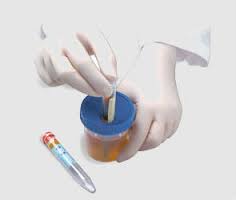 In addition, leukocyturia manifests itself even in the case of obstruction of the urinary tract with pyelonephritis. For the first symptoms this disease include pain in the affected area (that is, in the lumbar zone where the kidneys are located) and intoxication cider (chills, fever, loss of appetite, general weakness, vomiting and frequent nausea). Children have abdominal pain. Plus, in the analysis of urine with pyelonephritis, an indicator of the presence of the disease is erythrocyturia. It manifests itself after necrotic papillitis, with acute forms cystitis and in case of damage to the fornic apparatus.
In addition, leukocyturia manifests itself even in the case of obstruction of the urinary tract with pyelonephritis. For the first symptoms this disease include pain in the affected area (that is, in the lumbar zone where the kidneys are located) and intoxication cider (chills, fever, loss of appetite, general weakness, vomiting and frequent nausea). Children have abdominal pain. Plus, in the analysis of urine with pyelonephritis, an indicator of the presence of the disease is erythrocyturia. It manifests itself after necrotic papillitis, with acute forms cystitis and in case of damage to the fornic apparatus.
The next type of study of pyelonephritis is a biochemical analysis of urine. This method allows us to more accurately determine the causes of occurrence in the body. infectious agent, they also make it possible to determine the tolerance of the virus to antibacterial drugs. In addition, in the diagnosis of the disease, the method of Gram staining of urine is used: in this case, it is possible to as soon as possible determine which type of pathogen is present in the affected organism. A similar analysis for pyelonephritis in terms of indicators will show antibodies and antigens to a specific type of infection.
Urinalysis in chronic pyelonephritis.
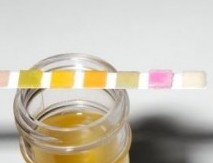 The chronic form of pyelonephritis is infectious and inflammatory, kidney disease, during which, in addition to the calyx and pelvis, the kidney tissue itself is also involved in the inflammatory process. Usually the disease progresses in women over the age of fifty. The course of pyelonephritis in a chronic form is accompanied by an alternation of exacerbation and remission phase. By origin chronic pyelonephritis can be primary (not associated with a previous urological disease), as well as secondary (occurs due to the fact that urinary tract affected by some urological disease).
The chronic form of pyelonephritis is infectious and inflammatory, kidney disease, during which, in addition to the calyx and pelvis, the kidney tissue itself is also involved in the inflammatory process. Usually the disease progresses in women over the age of fifty. The course of pyelonephritis in a chronic form is accompanied by an alternation of exacerbation and remission phase. By origin chronic pyelonephritis can be primary (not associated with a previous urological disease), as well as secondary (occurs due to the fact that urinary tract affected by some urological disease). Chronic pyelonephritis can be caused by microorganisms various kinds, the most common are viruses, fungi and E. coli. A general blood test for this disease shows a reduced amount of hemoglobin, red blood cells, leukocytosis, increase in ESR and shift left to leukocyte formula. In the analysis of urine, hypostenuria appears quite early (this is a small specific gravity of urine), as well as polyuria. Such changes are most noticeable in the case of taking a Zimnitsky sample. In this case, urine has an alkaline reaction.
In case of exacerbation of chronic pyelonephritis, leukocyturia is noted (when the number of leukocytes in a milliliter of urine is 20 * 103 or more), and more than thirty percent of active leukocytes. In the remission phase, there may be no leukocytes. When analyzed according to Nechiporenko, leukocyturia predominates over erythrocyturia.
Urinalysis in acute pyelonephritis.
Acute pyelonephritis is called exudative, acute inflammation renal tissue and pelvis, which has pronounced violation working functions of the kidneys. The most common causative agent of pyelonephritis in acute forms is Escherichia coli. If a neutrophilic leukocytosis is detected in a blood test in acute pyelonephritis, and a shift is observed in the leukocyte formula to the left, this indicates an increased ESR. If the patient's condition worsens, leukopenia is possible.In acute pyelonephritis, urinalysis can detect pyuria (that is, pus) or bacteriuria - these two diagnostic indicators are extremely important. In addition, proteinuria and hematuria may be noted (in rare cases gross hematuria occurs). When analyzing urine sediments, you can see cylinders (leukocyte, hyaline, or granular - in the case of severe course), epithelial tubular cells, and leukocytes.
Found a typo? Select the fragment and send it by pressing Ctrl+Enter.




